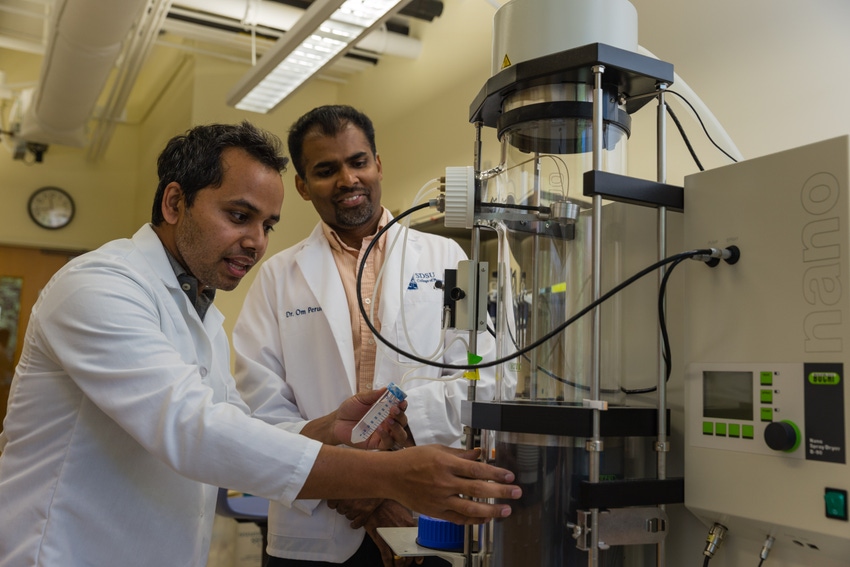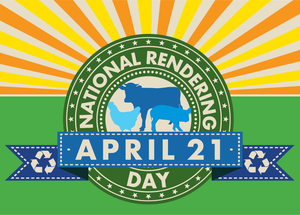Corn nanoparticles protect medications intended for children, while milk protein improves taste and texture.
February 20, 2017

Developing medications for children can be challenging because taste and texture are important, but safety is also a major concern, according to pharmaceutical sciences professor Om Perumal at South Dakota State University.
As co-founder and chief scientific officer of Tranzderm Solutions, he is adapting his corn protein-based drug delivery method to oral pediatric formulations.
“Our core technology is the same, but we’ve refined it and are finding new ways to utilize it,” Perumal said. His patented drug delivery system uses zein, a protein found in dried distillers grains -- a co-product of ethanol production -- to encapsulate the medication. The nanoparticles are approximately 500 times smaller than the diameter of a human hair.
To apply to oral pediatric formulations, Perumal explained that the nanoparticles are modified "by coating them with milk proteins. Our idea is to use products kids like.”
Providing federal incentive
Before 1998, about 70% of the drugs used for children had not undergone clinical testing for the newborn to 17-year-old age range, according to the National Institutes of Health's Medline Plus.
“Drugs behave differently in children than adults,” Perumal said. However, the pharmaceutical industry did not have much incentive to do the testing because pediatric medications make up only 10% of the pharmaceutical market.
To encourage the development of drugs customized for children, the federal government passed the Best Pharmaceutical for Children’s Act in 2002. It grants incentives to drug companies conducting Food & Drug Administration-requested pediatric studies.
Adapting to pediatric market
“We are developing formulas customized for children that are safe and can be flexible based on the age of the patient,” Perumal explained. Their initial work targets infants and toddlers, who need medicine in either an oral suspension or a chewable form.
“Dissolving a drug that is not water soluble can result in a thick, uninviting suspension,” he explained. In addition, "using an excipient, such as high amounts of alcohol, to dissolve the drug is out of the question for young children.”
The zein nanoparticles, which are not water soluble, protect the drug, and the milk protein coating makes them more water dispersible. “We have the best of both worlds,” Perumal noted. In addition, the milk powder masks the drug’s taste.
“We can put the nanoparticles into a liquid, a chewable tablet or a capsule,” he said. “We could even use them as food sprinkles.”
Identifying potential medications
The patent-pending drug delivery method can be optimized using different milk proteins, such as casein, lactoferrin and lactoglobulin. To mimic how the delivery system works, Perumal is testing the formulations using simulated gastric and intestinal fluid.
“We don’t want it to release in the food matrix,” he explained. The medication should be absorbed -- typically within 24 hours -- in the intestinal tract. Milk has worked best thus far, but experiments are underway to test the formulation in yogurt and other food matrices.
Perumal's first target medications are antiretrovirals, which HIV-positive children must take for their lifetime. Using a rat model, Perumal and his team found that his formulation has two to four times higher absorption than what’s currently on the market.
Another target medication is a drug under investigation to treat neuroblastoma, a cancer that affects infants and children up to 10 years old. Although neuroblastoma accounts for 6% of cancer in children, Perumal said no pediatric drug formulation is available for the investigational compound.
In addition, what works for children will be useful for patients who have swallowing difficulties, such as the elderly. However, Perumal cautioned, the delivery platform is in the early stages of development. Pharmaceuticals take anywhere from 15 to 20 years to reach the market.
You May Also Like
.png?width=300&auto=webp&quality=80&disable=upscale)


